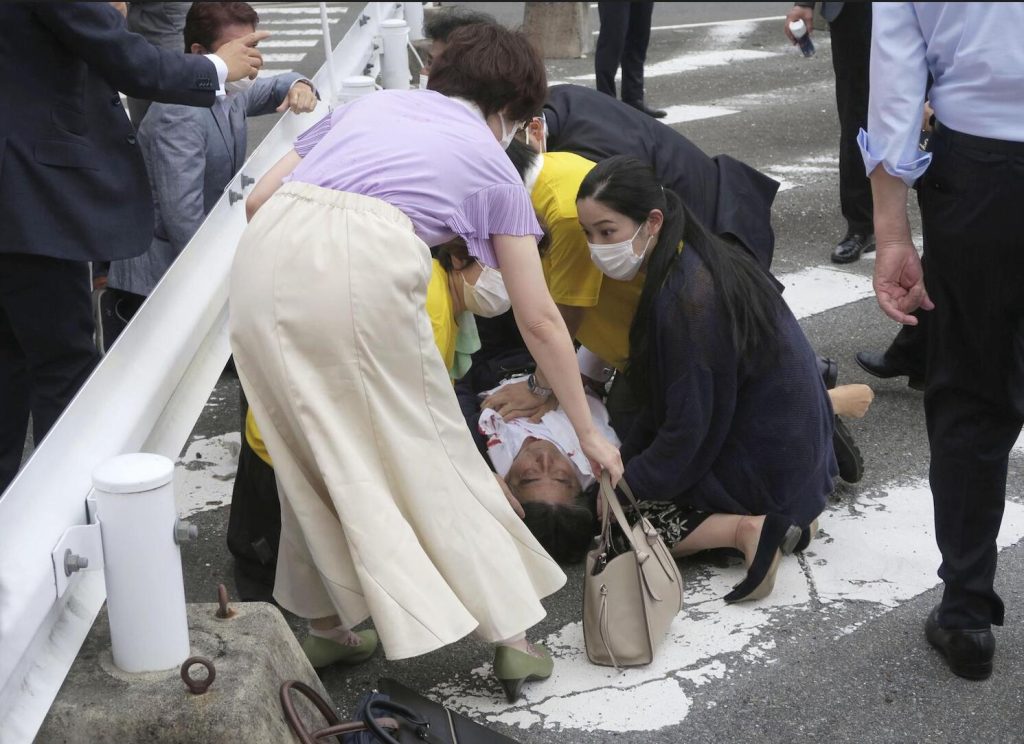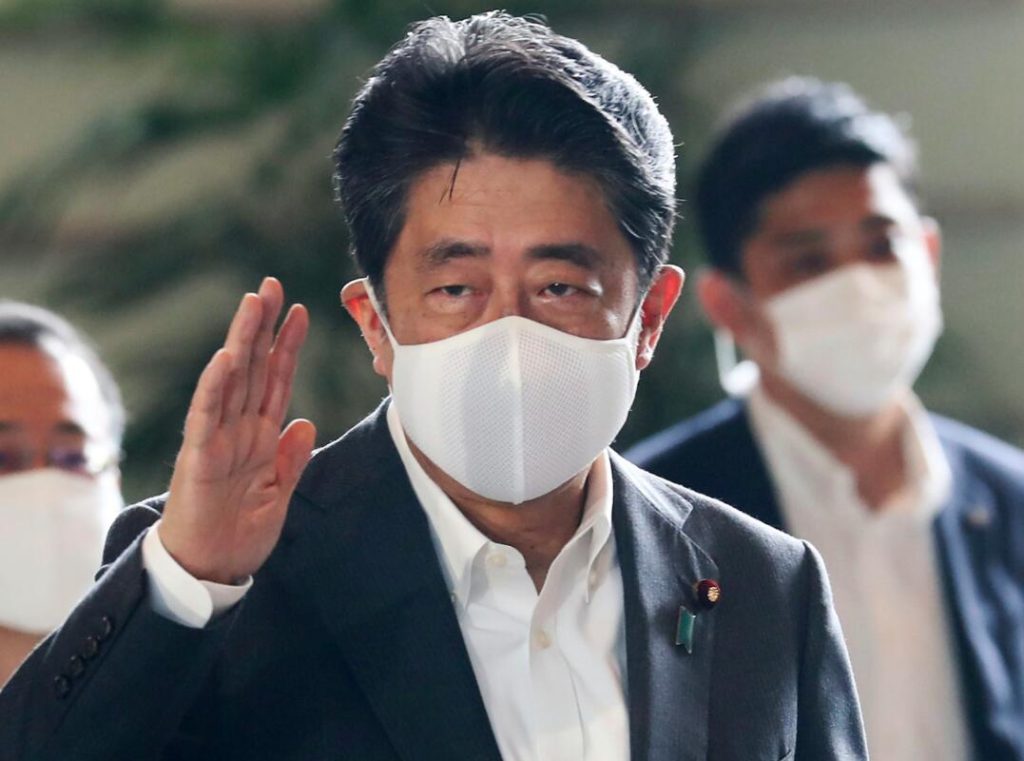Former Prime Minister Shinzo Abe, one of Japan’s most influential postwar leaders, died Friday at the age of 67 after being shot while delivering a stump speech in the western city of Nara two days ahead of a national election, stunning the world and drawing outrage against gun violence.
Japan’s longest-serving leader was shot at close range by a 41-year-old man who approached him from behind, wielding a homemade gun, as he was speaking in front of Kintetsu Railway’s Yamato-Saidaiji Station at around 11:30 a.m., local police said. Abe collapsed on the ground after two loud shots were heard and he was rushed to a hospital with blood seen on his white shirt.
A doctor with the Nara Medical University Hospital later said at a press conference that Abe was pronounced dead at 5:03 p.m. and the wound was deep enough to reach his heart, adding that the cause of death is believed to be blood loss.
Tetsuya Yamagami, a resident of Nara, was arrested at the scene on suspicion of attempted murder, the police said. The suspect was a member of the Maritime Self-Defense Force for about three years through August 2005, according to government sources.
“It’s not a grudge against the political beliefs of former Prime Minister Abe,” Nara prefectural police quoted Yamagami as saying. His home was later searched by the police, who found items that could be explosives and homemade guns, they said.
The police said Yamagami, who came to the venue of the speech by train carrying a fabric bag, has confessed that he committed the crime as he has a grudge against a “specific organization” in the belief that it is linked with Abe. They said the gun used was about 40 centimeters in length and 20 cm in height.
He told the police that he had found information online about Abe’s schedule for stump speeches, investigators said. The former prime minister’s schedule was set on Thursday afternoon.
Yamagami, now unemployed, was working at a manufacturer in the Kansai region covering Osaka, Nara and Kyoto from around the autumn of 2020, but he quit in May this year, according to a staffing agency employee.
Prime Minister Fumio Kishida, after returning to his office in Tokyo by helicopter from Yamagata Prefecture where he was campaigning, condemned the shooting of the former leader “in the strongest possible terms.”
“The barbaric act that took the life of former Prime Minister Abe during (campaigning for) an election that serves as the foundation of democracy should never be tolerated,” a tearful Kishida said after the former premier’s death was confirmed, which sent shock waves across Japan and the rest of the world.
“I am stunned, outraged, and deeply saddened by the news that my friend Abe Shinzo, former Prime Minister of Japan, was shot and killed,” U.S. President Joe Biden said in a statement. “We know that violent attacks are never acceptable and that gun violence always leaves a deep scar on the communities that are affected by it.”

Abe, who was prime minister until 2020, was brought to the hospital showing no signs of life and also with two neck wounds, according to the doctor.
“There was bleeding from various places and it could not be stopped completely,” despite emergency treatment, the doctor, Hidetada Fukushima, said. “Unfortunately, his heartbeat did not resume.”
Abe, who was also the longtime leader of the ruling Liberal Democratic Party, was in the city to support a candidate running in Sunday’s House of Councillors election and there was a crowd of people listening to his speech near the railway station when the attack occurred.
While the assailant’s motive is not fully known, Kishida said he will continue with campaigning without yielding to violence and ensure a “free and fair” election.
A Kyodo News reporter at the scene saw the attacker, wearing a white mask, gray polo shirt and brown trousers, silently approach Abe, who had been speaking for several minutes, before shooting him.
Screams were heard from the crowd and Abe fell to the ground seconds later. Yamagami, who appeared on the road about five meters away from him, was immediately apprehended by police officers.
A campaign staff member was seen desperately trying to revive Abe by pushing on his chest with both hands as he lay on the ground with his eyes closed. People nearby called for medical assistance.
It is a rare case of a shooting in Japan, a country with strict gun regulations. No Japanese prime minister after World War II had been killed.
The weapon used by Abe’s assailant made a noise that could be compared to an explosion, and white smoke rose into the air after it was discharged. A gunpowder-like smell could be detected afterward.
The weapon appeared to have its barrel wrapped with duct tape, the reporter said.
Born into a prominent political family, Abe served as a secretary for his father, former Foreign Minister Shintaro Abe, before being elected to the House of Representatives in 1993.
He had a short stint as prime minister between 2006 and 2007 before assuming the post again in 2012. He stepped down due to health problems after nearly eight years.
During his second term as leader, he pursued economic policies dubbed “Abenomics” marked by massive monetary easing, fiscal stimulus and structural reforms aimed at beating deflation and turning the nation’s stagnant economy around.
Abe made efforts to bolster Japan’s security alliance with the United States and raise Japan’s profile overseas, while seeking to promote reform of Japan’s U.S.-drafted pacifist Constitution.
In 2014, the Abe administration went ahead with a reinterpretation of the Constitution to enable the use of collective self-defense — defending allies even without an attack on Japan itself — and expanded the role of the Self-Defense Forces under new security legislation in 2016.
The hawkish conservative sometimes drew the ire of Japan’s Asian neighbors over wartime issues. In December 2013, Abe visited Tokyo’s Yasukuni shrine, viewed as a symbol of Japan’s past militarism, provoking a strong response, especially from China and South Korea.


